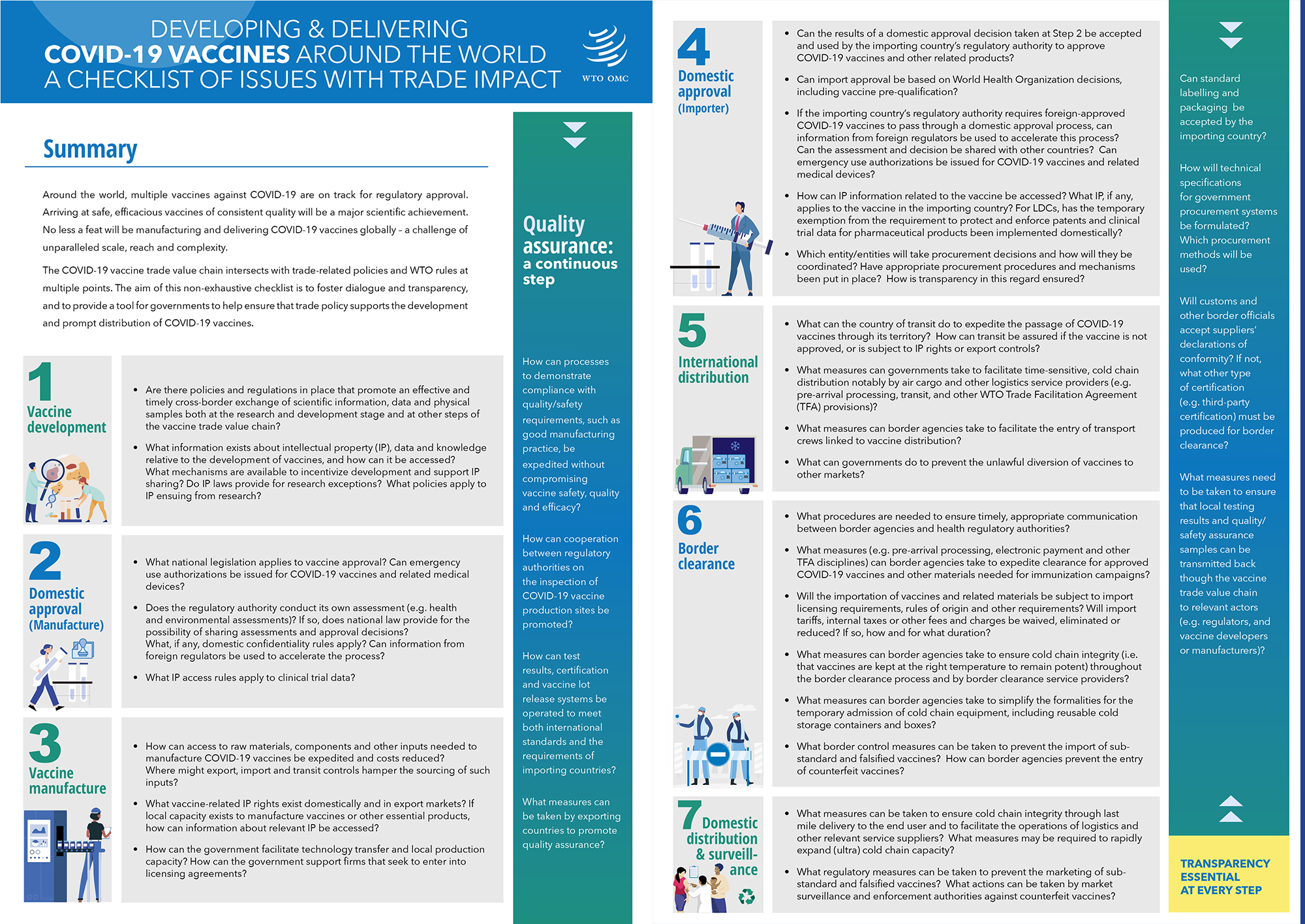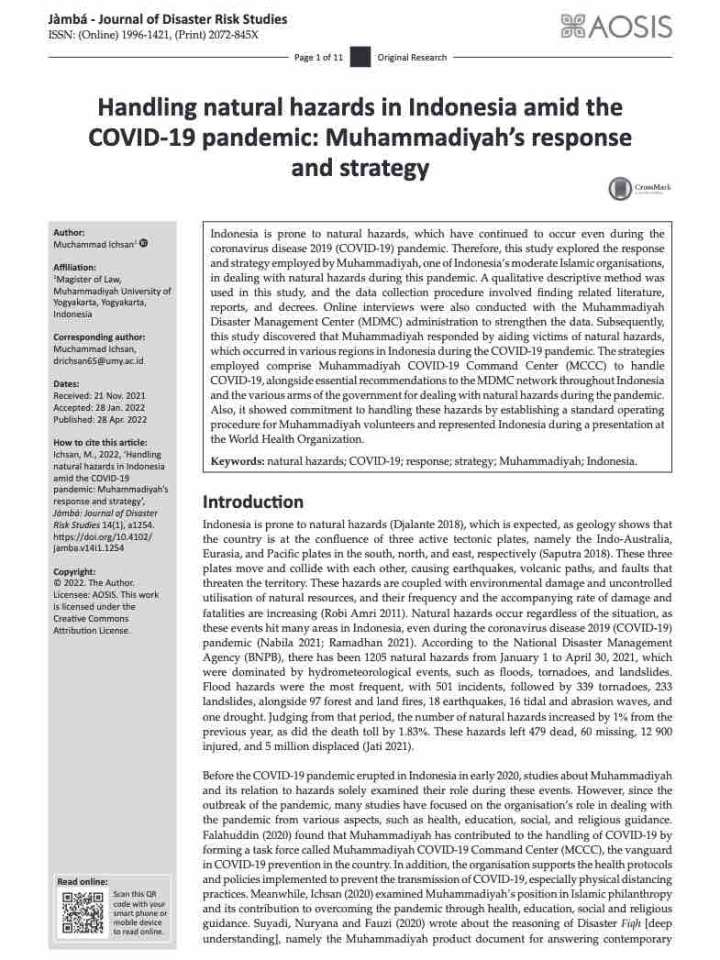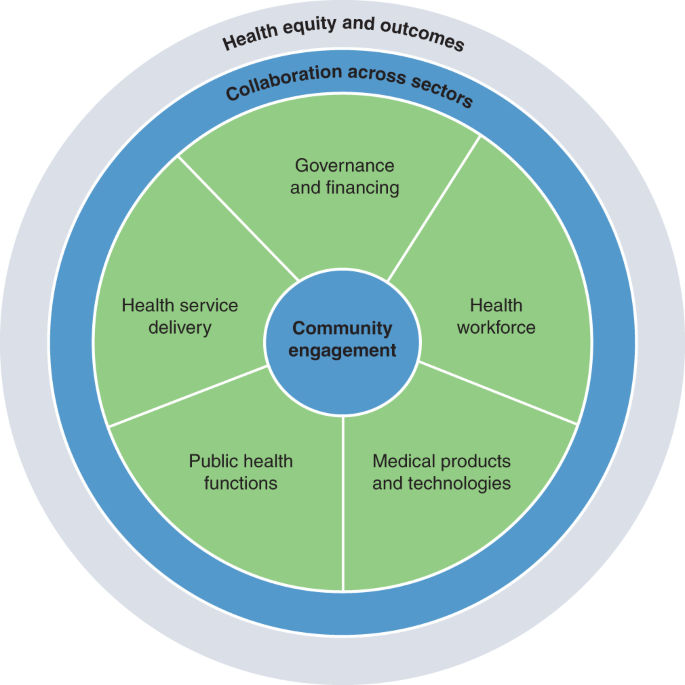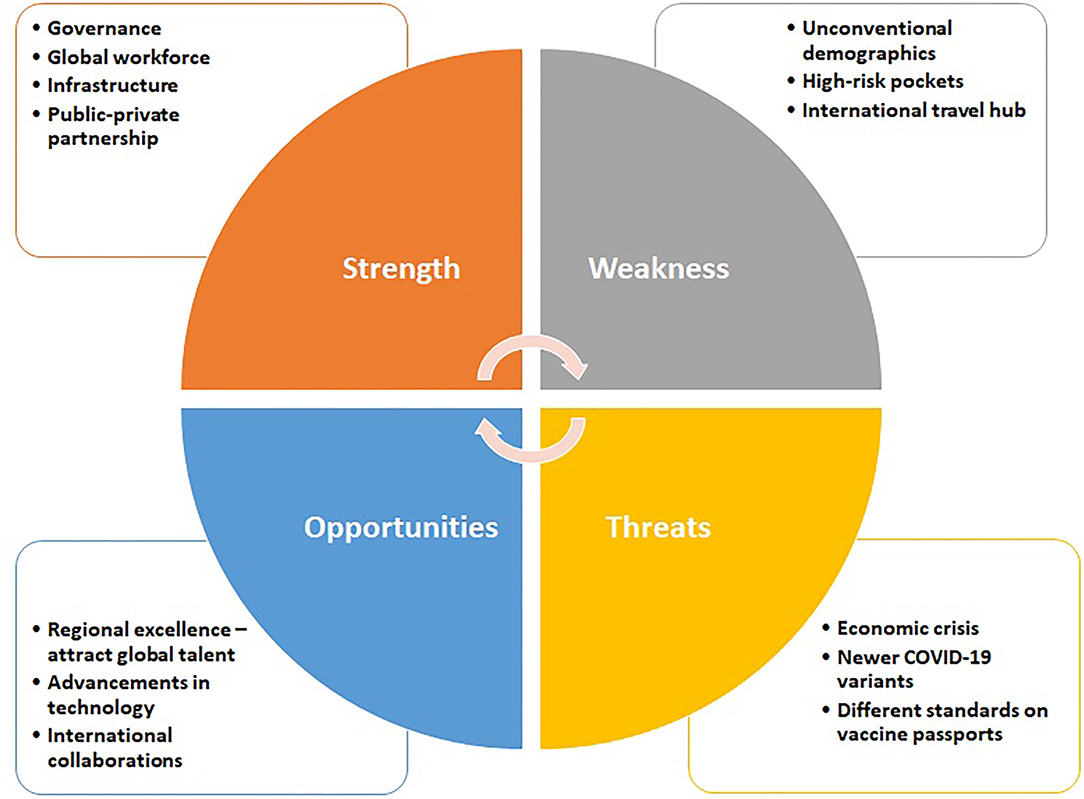Navigating Pandemic: Essential Health Guidelines for Well-being

Introduction
In the midst of a global pandemic, adherence to essential health guidelines is paramount for safeguarding individual and community well-being. Navigating through these challenging times requires a commitment to following established health guidelines to minimize the spread of the virus and protect public health.
The Foundation: Social Distancing and Mask-Wearing
At the core of pandemic health guidelines are social distancing and mask-wearing. These fundamental practices act as the foundation for preventing the transmission of the virus. Maintaining a safe physical distance and wearing masks in public spaces significantly reduce the risk of viral spread, contributing to overall community safety.
Hygiene Practices: A Key Defense
Frequent handwashing and proper hygiene practices form a crucial line of defense against the virus. Guidelines emphasize the importance of regular handwashing with soap and water or using hand sanitizer with at least 60% alcohol. By incorporating these practices into daily routines, individuals contribute to breaking the transmission chain.
Staying Informed: The Role of Transparent Communication
Transparent and accurate communication plays a pivotal role in disseminating health guidelines effectively. Staying informed about the latest developments, guidelines, and recommendations from health authorities empowers individuals to make informed decisions, fostering a collective sense of responsibility.
Protecting Vulnerable Populations: A Community Effort
Pandemic health guidelines underscore the need to protect vulnerable populations, including the elderly and those with underlying health conditions. Communities play a vital role in supporting these groups by adhering to guidelines, minimizing potential exposure, and offering assistance where needed.
Testing and Contact Tracing: Early Detection Strategies
Guidelines emphasize the importance of widespread testing and efficient contact tracing as crucial elements in early detection and containment. By identifying and isolating cases promptly, communities can mitigate the spread of the virus and prevent outbreaks, reinforcing the effectiveness of health guidelines.
Vaccination: A Cornerstone for Community Immunity
As vaccines become available, guidelines encourage widespread vaccination to achieve community immunity. Vaccination is a key strategy in reducing the severity of illness, preventing hospitalizations, and ultimately bringing an end to the pandemic. Adhering to vaccination schedules aligns with health guidelines for a safer community.
Emphasizing Mental Health: Holistic Well-being
Health guidelines extend beyond physical well-being to encompass mental health. Guidelines emphasize the importance of addressing the mental health impact of the pandemic, encouraging individuals to seek support, stay connected, and prioritize self-care to maintain overall well-being.
Travel Guidelines: Minimizing Risks
With global connectivity, travel guidelines become essential in preventing the spread of the virus across regions. Health guidelines for travel include recommendations on testing, quarantine protocols, and safety measures to minimize the risk of transmission during domestic and international travel.
Adaptability and Resilience: Navigating Uncertain Times
Pandemic health guidelines emphasize the need for adaptability and resilience. As circumstances evolve, guidelines may be updated to reflect the latest information. Communities that exhibit flexibility and resilience in adhering to evolving health guidelines contribute to a collective effort in overcoming the challenges of the pandemic.
Conclusion with Link
In conclusion, following pandemic health guidelines is a shared responsibility that contributes to the well-being of individuals and communities. For further insights into navigating health guidelines and promoting community safety, visit The Healthy Consumer website. Stay informed, stay vigilant.
Vaccination Rollout: Progress and Strategies Amid Pandemic

Vaccination Rollout: Progress and Strategies Amid Pandemic
The global vaccination rollout stands as a critical milestone in the fight against the pandemic. This article explores the progress made, challenges faced, and strategies employed in the ongoing vaccination efforts worldwide.
Global Vaccination Progress
The global vaccination effort has witnessed remarkable progress since the introduction of COVID-19 vaccines. Countries around the world have initiated mass vaccination campaigns to immunize their populations against the virus. The speed at which vaccines have been developed and deployed underscores the urgency of curbing the spread of the virus.
Challenges in Distribution and Accessibility
Despite progress, challenges in vaccine distribution and accessibility persist. Many regions face hurdles in securing an adequate supply of vaccines, and logistical challenges can hinder the efficient delivery of doses. Ensuring equitable access to vaccines remains a crucial aspect of the global vaccination strategy.
Variants and the Need for Flexibility
The emergence of new virus variants adds complexity to the vaccination rollout. Adapting vaccine strategies to address these variants requires flexibility and ongoing research. Vaccine developers and health authorities continually monitor and adjust vaccination approaches to maintain effectiveness against evolving strains of the virus.
Public Communication and Vaccine Hesitancy
Effective communication is essential in encouraging widespread vaccine acceptance. However, vaccine hesitancy poses a challenge, with misinformation and concerns impacting public perception. Public health authorities work to address misconceptions, provide accurate information, and build trust to enhance vaccine uptake.
Vaccination Strategies for Vulnerable Populations
Protecting vulnerable populations is a key focus of vaccination strategies. This includes prioritizing older adults, individuals with underlying health conditions, and those in congregate settings. Tailoring vaccination approaches to meet the unique needs of these groups is critical for reducing severe illness and mortality.
Global Cooperation and Vaccine Diplomacy
Global cooperation plays a pivotal role in ensuring the success of the vaccination rollout. Countries, organizations, and pharmaceutical companies collaborate to share resources, knowledge, and vaccine doses. Vaccine diplomacy efforts aim to address global disparities in vaccine access and distribution.
Addressing Supply Chain Challenges
The vaccine rollout has highlighted the importance of resilient supply chains. Challenges in the production, distribution, and storage of vaccines underscore the need for strategic planning and international collaboration to overcome supply chain hurdles and ensure a steady flow of doses.
Integration of Technology in Vaccination Management
Technology plays a vital role in streamlining vaccination processes. Digital tools, such as appointment scheduling systems and vaccine passports, contribute to efficient and organized vaccination campaigns. Leveraging technology enhances data management, tracking, and communication throughout the vaccination rollout.
Booster Dose Considerations
As vaccination efforts progress, discussions around booster doses come to the forefront. Evaluating the need for booster shots to enhance immunity and address emerging variants is an ongoing aspect of vaccination strategy. Health authorities weigh scientific evidence and global trends to determine the optimal approach.
The Path Forward: Achieving Herd Immunity
The ultimate goal of the vaccination rollout is to achieve herd immunity, limiting the spread of the virus within communities. This requires a significant percentage of the population to be vaccinated. Continued efforts in outreach, education, and accessibility are essential for reaching this critical milestone.
Visit The Healthy Consumer for comprehensive information and resources on the ongoing vaccination rollout. Together, let’s contribute to the collective effort in overcoming the challenges posed by the pandemic through vaccination.
Strategic Responses: Navigating Pandemic Challenges

Crafting Effective Responses: Navigating Pandemic Challenges
The unprecedented challenges posed by a global pandemic demand strategic and adaptive responses. In navigating these complex scenarios, effective pandemic response strategies emerge as crucial tools for mitigating the impact, safeguarding communities, and fostering resilience.
Understanding the Dynamic Nature of Pandemics
The foundation of effective pandemic response lies in a comprehensive understanding of the dynamic nature of these global health crises. Recognizing that pandemics evolve, presenting different challenges at various stages, allows for the formulation of strategies that are agile, adaptive, and rooted in real-time data and insights.
Collaborative Governance and Interagency Coordination
A successful pandemic response requires collaborative governance and seamless interagency coordination. Governments, healthcare systems, and relevant agencies must work together cohesively. Establishing clear communication channels, sharing resources, and coordinating efforts ensure a unified response that is vital in managing the complexities of a pandemic.
Implementing Early Detection and Surveillance Systems
Early detection is paramount in controlling the spread of a pandemic. Implementing robust surveillance systems, both at local and global levels, facilitates early identification of outbreaks. Monitoring trends, analyzing data, and swiftly responding to emerging threats enable authorities to contain and manage the impact of the pandemic effectively.
Strategic Testing and Contact Tracing Initiatives
Strategic testing and contact tracing initiatives form the bedrock of a targeted response. Widespread and accessible testing, coupled with efficient contact tracing, allows for the identification and isolation of cases promptly. This strategic approach helps break the chains of transmission and prevents the exponential spread of the virus.
Healthcare System Preparedness and Capacity Building
Ensuring the preparedness and capacity of healthcare systems is a critical aspect of pandemic response. This involves strengthening healthcare infrastructure, securing adequate medical supplies, and enhancing the capacity of healthcare professionals. A robust healthcare system is essential for managing the influx of patients and providing quality care.
Communication and Public Awareness Campaigns
Transparent and timely communication is indispensable in a pandemic response. Implementing effective communication strategies and public awareness campaigns disseminate accurate information, dispel myths, and foster a sense of collective responsibility. Informed communities are more likely to adhere to preventive measures, contributing to the overall success of the response.
Balancing Social and Economic Impacts
Pandemic response strategies must strike a delicate balance between addressing the health crisis and mitigating social and economic impacts. Implementing measures to support individuals and businesses affected by the pandemic, such as financial aid packages, unemployment support, and targeted economic stimulus, contributes to a more holistic response.
Prioritizing Vulnerable Populations and Equity
An equitable pandemic response prioritizes the needs of vulnerable populations. This includes the elderly, individuals with underlying health conditions, and marginalized communities. Tailoring strategies to address the specific challenges faced by these groups ensures that the response is inclusive and leaves no one behind.
International Cooperation and Information Sharing
Pandemics transcend borders, underscoring the importance of international cooperation. Sharing information, expertise, and resources on a global scale enhances the collective response. Collaborative efforts among nations foster a sense of solidarity and enable a more effective and coordinated approach to managing and overcoming the pandemic.
To delve deeper into effective pandemic response strategies, visit Pandemic Response Strategies. As the world grapples with the challenges posed by global health crises, implementing thoughtful and strategic responses is imperative. By understanding the evolving nature of pandemics, fostering collaboration, and prioritizing the well-being of communities, nations can navigate these challenges with resilience and effectiveness.
Building Community Resilience: Navigating Pandemic Challenges

Introduction
In the face of unprecedented challenges brought on by the global pandemic, the concept of community resilience has become more crucial than ever. Building and strengthening the resilience of communities is not only a collective effort but a necessity for navigating the uncertainties that lie ahead.
Fostering Solidarity and Connection
At the heart of community pandemic resilience is the fostering of solidarity and connection among its members. Communities that come together, support one another, and maintain open lines of communication are better equipped to face the challenges presented by the pandemic. Social cohesion acts as a powerful buffer against the negative impacts of isolation and uncertainty.
Local Leadership and Empowerment
Resilient communities often have strong local leadership that empowers residents to actively participate in decision-making processes. By empowering individuals within the community, local leaders can tap into a diverse range of skills and perspectives, fostering a sense of ownership and responsibility that contributes to overall resilience.
Emergency Preparedness and Response
An integral aspect of community resilience is robust emergency preparedness and response mechanisms. Communities that have well-defined plans for emergencies, clear communication channels, and practice regular drills are better prepared to handle unexpected crises, ensuring a swift and coordinated response when needed.
Supporting Vulnerable Populations
In times of crisis, vulnerable populations within a community are often disproportionately affected. Building resilience requires a concerted effort to support and protect these groups. This can involve creating targeted support programs, providing access to essential resources, and ensuring that vulnerable individuals have a voice in community decision-making.
Adapting to Change and Innovation
Resilient communities demonstrate a capacity to adapt to change and embrace innovation. The pandemic has accelerated the need for creative solutions to new challenges. Communities that foster a culture of innovation can find novel ways to address issues, whether it’s supporting local businesses or adapting community services to the evolving needs of residents.
Collaboration with Local Businesses
Local businesses are the backbone of many communities, and their resilience is intertwined with that of the community itself. Collaborative efforts between the community and local businesses, such as supporting buy-local initiatives, can strengthen economic resilience. This symbiotic relationship contributes to the overall well-being of the community.
Crisis Communication and Information Sharing
Effective communication is a cornerstone of community pandemic resilience. Timely and accurate information helps residents make informed decisions, reduces anxiety, and ensures a unified response. Communities that establish reliable communication channels and actively share relevant information contribute to a sense of shared understanding and purpose.
Mental Health and Well-being Support
Prioritizing mental health and well-being is a crucial component of community resilience. Establishing support systems, providing access to mental health resources, and reducing the stigma around seeking help contribute to the overall health of the community. A mentally resilient community can better navigate the challenges posed by the ongoing pandemic.
Sustainable Community Practices
In the pursuit of resilience, communities must also consider sustainability. Practices that promote environmental sustainability, economic stability, and social equity contribute to long-term community well-being. A holistic approach ensures that the community is not only resilient in the face of immediate challenges but also prepared for a sustainable future.
Conclusion with Link
In conclusion, community pandemic resilience is a multifaceted endeavor that requires active participation from all members. Fostering solidarity, supporting vulnerable populations, and embracing innovation are just a few components of building a resilient community. For further insights into community resilience during the pandemic, visit The Healthy Consumer website. Strengthen your community, stay resilient.
Community Resilience: Supporting Each Other Amidst Pandemic

Community Resilience: Supporting Each Other Amidst Pandemic
The global pandemic has brought communities together in unprecedented ways. In this article, we explore the essential role of community support during the pandemic, highlighting strategies that foster resilience and strengthen the bonds that hold us together.
Building a Strong Foundation: The Importance of Community Support
At the heart of navigating the challenges posed by the pandemic is the crucial role of community support. Building a strong foundation of support within neighborhoods, towns, and cities creates a safety net that ensures no one is left behind. From sharing resources to emotional encouragement, community support forms the backbone of resilience.
Mutual Aid Networks: A Beacon of Solidarity
Mutual aid networks have emerged as beacons of solidarity during the pandemic. These networks connect individuals willing to offer support with those in need. Whether it’s grocery shopping for vulnerable community members, providing childcare for essential workers, or simply offering a friendly ear, mutual aid fosters a sense of collective responsibility.
Local Businesses and Community Resilience: A Symbiotic Relationship
The pandemic has significantly impacted local businesses, but community support can be a lifeline. Supporting local businesses not only helps them survive economic challenges but also ensures that vibrant community hubs remain intact. From choosing local retailers to participating in community-sponsored events, individuals play a pivotal role in sustaining these essential establishments.
Embracing Digital Platforms: Connecting Communities Virtually
In a time of physical distancing, digital platforms have become vital for maintaining community connections. Virtual meet-ups, online forums, and social media groups enable communities to stay connected, share information, and provide emotional support. The virtual realm has proven to be a powerful tool for fostering a sense of belonging.
Community Gardens and Sustainable Practices: Nurturing Well-being
Community gardens and sustainable practices contribute to both physical and mental well-being. Engaging in communal gardening not only provides access to fresh produce but also creates a shared space for connection. Sustainable initiatives, such as recycling programs or energy-saving initiatives, not only benefit the environment but also foster a sense of communal responsibility.
Crisis Communication and Community Updates: Transparency Matters
Transparent communication is crucial during a crisis. Establishing reliable channels for community updates ensures that everyone is informed about safety protocols, available resources, and the evolving situation. Transparent communication builds trust and helps community members make informed decisions during challenging times.
Supporting Vulnerable Populations: A Collective Responsibility
During the pandemic, it’s essential to prioritize support for vulnerable populations. Whether it’s the elderly, those with pre-existing health conditions, or individuals facing economic hardship, community support plays a vital role. Establishing outreach programs, volunteer networks, and dedicated resources for vulnerable groups strengthens the fabric of the entire community.
Education Initiatives: Empowering the Community
Empowering the community through education initiatives is key to resilience. Providing information about public health guidelines, available support services, and crisis response strategies ensures that community members are equipped to navigate challenges. Knowledge empowers individuals to make informed decisions for the well-being of themselves and their community.
Accessing Community Support Pandemic: A Resource for Resilience
For additional insights and resources on fostering community support during the pandemic, consider exploring Community Support Pandemic. This centralized hub offers valuable information, practical tips, and support for individuals and communities working together to build resilience and navigate the complexities of the ongoing pandemic.
Navigating Crisis: Effective Management During the Pandemic

The Imperative of Pandemic Crisis Management
In the face of a global pandemic, effective crisis management is paramount to navigate uncertainties and mitigate the impact on individuals, communities, and organizations. This article explores the essential components and strategies for adeptly managing crises during these challenging times.
Understanding the Dynamic Nature of Pandemic Crises
Pandemic crises are dynamic and multifaceted, requiring a nuanced understanding of their evolving nature. From public health challenges to economic disruptions and social impacts, crisis management must encompass a comprehensive perspective to address the diverse aspects of the crisis.
Developing a Robust Crisis Response Plan
A foundational element of pandemic crisis management is the development of a robust response plan. This plan should outline clear roles and responsibilities, communication protocols, resource allocation strategies, and contingency measures. A well-prepared response plan forms the basis for swift and coordinated actions in times of crisis.
Effective Communication: A Cornerstone of Crisis Management
Communication is central to crisis management, particularly during a pandemic. Timely, transparent, and accurate communication builds trust and ensures that individuals and stakeholders are well-informed. The dissemination of vital information about safety measures, updates, and support resources is crucial for effective crisis response.
Coordination and Collaboration Across Sectors
Pandemic crises necessitate collaboration across various sectors, including healthcare, government, businesses, and communities. Coordinated efforts enhance the efficiency and effectiveness of crisis management. Partnerships between public and private entities, as well as international collaboration, contribute to a more resilient response.
Prioritizing Public Health and Safety Measures
Protecting public health and safety is paramount in pandemic crisis management. Implementing and enforcing measures such as social distancing, testing, contact tracing, and vaccination campaigns are critical components. Prioritizing these measures contributes not only to immediate crisis response but also to long-term resilience.
Addressing Economic Impact Through Strategic Measures
The economic fallout from a pandemic requires strategic measures to alleviate its impact. Governments and organizations may implement stimulus packages, financial support, and economic recovery plans. Balancing the economic considerations with public health priorities is essential for comprehensive crisis management.
Supporting Vulnerable Populations and Communities
Vulnerable populations often bear a disproportionate burden during crises. Crisis management strategies must include targeted support for these communities, addressing their specific needs and challenges. This includes access to healthcare, economic assistance, and social services tailored to vulnerable demographics.
Adapting Technology for Crisis Response
The integration of technology plays a pivotal role in crisis response. From data analytics for informed decision-making to the use of digital platforms for communication and coordination, technology enhances the efficiency and reach of crisis management efforts. Embracing innovation is key in navigating a rapidly evolving crisis landscape.
Evaluating and Learning from Crisis Responses
A critical aspect of crisis management is continuous evaluation and learning. After the initial response, assessing the effectiveness of measures, identifying areas for improvement, and incorporating lessons learned into future crisis plans contribute to adaptive and resilient crisis management.
Pandemic Crisis Management: A Collective Responsibility
In the face of a pandemic crisis, the responsibility for effective management extends to individuals, communities, organizations, and governments alike. A collective commitment to adhering to safety measures, supporting one another, and actively participating in crisis response initiatives is pivotal for overcoming challenges.
Explore More about Pandemic Crisis Management
Stay informed about pandemic crisis management strategies and insights at Pandemic Crisis Management. Together, let us navigate these challenging times with resilience, adaptability, and a shared commitment to overcoming crises.


(501).jpg)



